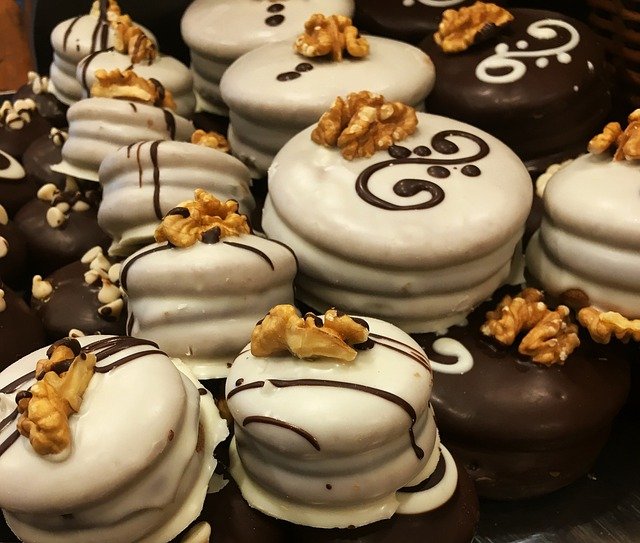
It is possible to find numerous types of alfajores.
In many countries alfajores are consumed; However, the characteristics of this product vary according to the region. The term, therefore, can refer to a particular food in one nation and a very different one in a different place.
Before moving forward with the various meanings, it is interesting to analyze the etymology of the term. Alfajor comes from the Hispanic Arabic fašúr , in turn derived from the Persian afšor (which can be translated as “juice” ). The Persian word, for its part, has its origin in the pelvi afšurdan (translatable as “squeeze” ).
The alfajor in Spanish territory
In Spanish pastries, alfajor is made with honey , walnuts and almond paste . It is a sweet that can be cylindrical in shape or that has a filling between two wafers made with wheat flour .
Alfajores are characteristic of Andalusia and are usually consumed during the Christmas season . According to historians, the alfajor was born in the gastronomy of al-Andalus , settled in Spain and later reached the American continent with the voyages of the conquerors.
It is important to mention that, even in the group of what is known as Andalusian alfajor , there are multiple versions. When they are prepared at home, each family usually has their own recipe .
The concept in Latin America
The Latin American alfajor is quite different from the Spanish one. In fact, it presents differences depending on the country and even according to the regions of each nation.
At a general level, these are two round cookies that are joined by a filling . Among the most popular fillings are dulce de leche , chocolate mousse , and quince jelly . As for the cookies or alfajor tapas, they can be covered in chocolate , powdered sugar or meringue , among other options.

Alfajores are pastry products that can be made by hand or industrially.
There are artisanal alfajores and those made industrially. In Argentina , the alfajores produced on the Atlantic Coast of Buenos Aires are famous, from well-known brands such as Balcarce and Havanna .
Continuing with the Argentine case, alfajores are sold in all supermarkets and kiosks in the country. It is common to offer them individually (wrapped in plastic) or in packages of six or twelve units.
The triple alfajor
Although the traditional alfajor consists of two tapas, in recent years triple alfajores have grown. As its name indicates, in this case the product has three cookies, all joined by layers of filling.
A triple alfajor, in this way, can consist of three baked cookies with dulce de leche between each of them. In turn, the entire alfajor can be dipped in chocolate, covering both the bottom and top lids and the sides.
With cornstarch lids
Among the types of alfajor we can also name the cornstarch alfajor . Their tapas are made with cornstarch and are usually filled with dulce de leche.
One of the peculiarities of cornstarch alfajores is that they usually do not have a coating : they only have grated coconut on the sides of the filling.
